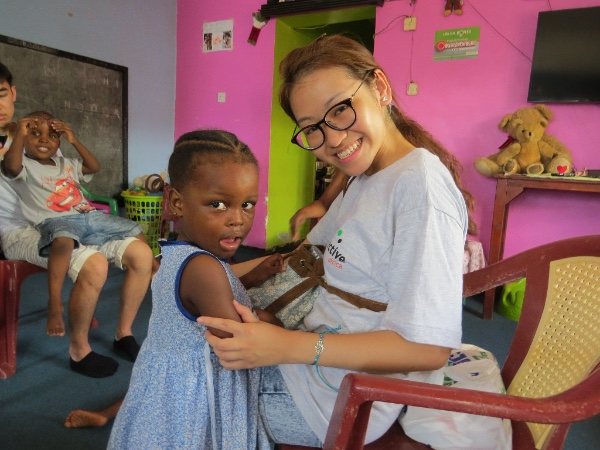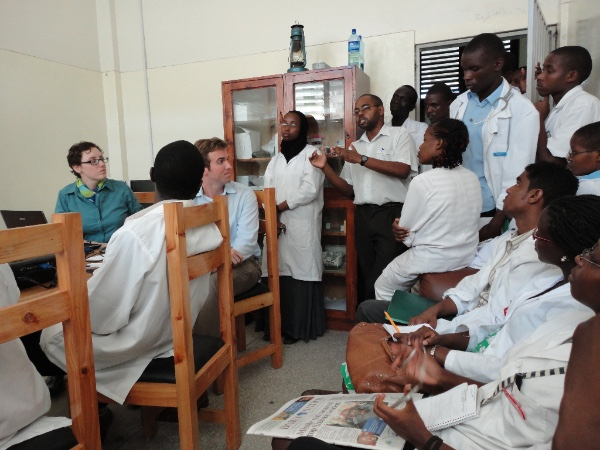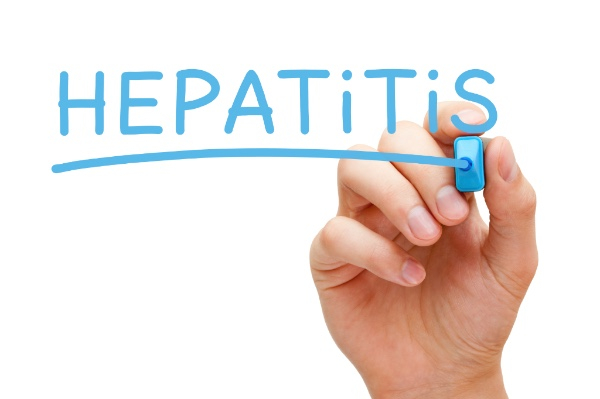 Visit Elective Africa website Visit Elective Africa website
|


|
|
|
| Elective Africa Monthly Newsletter |
 |
|
What happens when your social class and locality dictates the healthcare service you receive? In this newsletter we give you a glimpse of the Kenya healthcare providers crisis; urban vs rural, rich & middle class vs the poor. Alarming to note is the rising prevalence rate of HBV in Kenya. A report by Kenya Medical Research Institute revealed that HBV prevalence rate had surpassed that of HIV three-fold in a span of two years. Learn more about hepatitis in Kenya and why #ShowYourFace campaign for this year World Hepatitis Day is relevant. Why would you opt for an elective abroad in a developing country? Chrisity, a senior medical student from The University of Hong Kong shares her reasons for settling for Kenya as her elective abroad destination. The difference in the healthcare system in Hong Kong and Kenya are notable. Find out more in our case study section. Do you have a healthcare topic of interest? Talk to us to guest write for our readers and let us share together. Back to top |
| Stepping Out of The Comfort Zone by Chrisity Yan |
 |
|
Meet Chrisity Yan, a senior medical student from The University of Hong Kong in China Period of Placement - 4 Weeks Program - Medical Elective Placement Hospital - Coast Provincial General Hospital, Mombasa, Kenya What are the main reasons as to why you choose Kenya as your destination of choice? In my opinion, having clinical attachment in developing countries was going to be the best experience in medical school. I had learnt that the health care system and diseases in developing countries are entirely different from that in developed countries. I therefore was convinced this would be the best chance for me to learn tropical disease and HIV related diseases in Kenya. If I had an elective in other countries e.g. England, I could not appreciate the difference of health care facilities and resources between Hong Kong and developing countries. What was your general expectation as you travelled to Kenya, and as you started off your rotation? I wanted to have more hands on experiences e.g. taking blood, setting intravenous line, assisting delivery and Caesarean section. In addition, I wanted to learn more about tropical disease e.g. Dengue fever and malaria. I also expected to interact with doctors in Coast Provincial General Hospital, to let them know more about the health care system in Hong Kong.
What are some of the key health concerns in the region you were placed for an elective? I have a deep interest in internal medicine so I spent most of the time in the medical ward of Coast Provincial General Hospital (CPGH). The major health concerns would be HIV associated illness. The most commonly encountered conditions would be cryptococcal meningitis and pulmonary TB. Poor compliance to antiretroviral drug is also a major concern in Kenya.
What are some of the experiences you had in the hospital of placement, that shaped your rotation/elective? As I conclude the placement , I have learnt more about the clinical presentation and management of various tropical diseases. Moreover, I have deeper understanding on different classes of antiretroviral drugs, side effect of each class and various complication of HIV infection. In addition, I had intensive hand-on exposure to various procedures especially blood taking and setting an intravenous access. Attachment in CPGH provided me chances to polish up my clinical skills prior to commencing residency. Kenya is a developing country with limited resources and not very elaborate systems. There is limited investigations. Therefore, clinical judgment would be the most important diagnostic tool. I have learnt how to manage and stabilize patients when investigation is not readily available. What would you say in your opinion are the challenges in the delivery of care in the hospital you were placed at? Because of the limited resources in the hospital, the result of investigation usually come late. Therefore, it delays the proper treatment of a patient. Moreover, imaging and investigation are limited in Kenya. Even when the investigation is available for the patient, he/she may not be able to afford the cost of the investigation, which also significantly affect the delivery of care in the hospital. How different is it from Hong Kong? In Hong Kong, investigations and imaging can be easily ordered. Hence, we tend to overlook history taking and physical examination. In CPGH, I have learnt how important history taking and physical examination are. In addition, blood transfusion cannot be available all the time in Kenya. Hence, the hospital encourages the relatives of the patient to donate blood to the patient instead. However, there will be risk of transmission HIV and hepatitis to the patient. Differently, in Hong Kong, blood donation from the relatives of the patients is not allowed. On available medical specialities, Kenya is extremely different from Hong Kong. For example, we have various sub-specialties in internal medicine and surgery, but, there is none in CPGH. Moreover, infection control is not as elaborate in CPGH. There is overlooking of some essential procedures such as isolation for patients who have pulmonary tuberculosis. There is no air-conditioner inside the ward and this causes a very stuffy environment. Infection control and patient room ventilation has a great emphasis in Hong Kong. How did you find patients’ awareness and involvement in care within your placement hospital (Ethical Issues that you encountered that differs with your home country) Most patients in Kenya lack of health awareness while people in Hong Kong are always anxious about disease. There are lots of body check program and screening program in Hong Kong, so that we can detect diseases in asymptomatic stage. Prevention is always better than cure. Hence, people in Hong Kong do a lot in disease prevention e.g. safe sex, vaccination and healthy lifestyle. However, people in Kenya usually seek help in an advanced stage of illness, which makes management become difficult.
What was your best moment during your placement in Kenya? The best moment during my placement in Kenya was my interaction with patients. Since I cannot speak Swahili well, I was too shy to talk to them. Unexpectedly, they are all very friendly and some patients could even remember me because I followed the medical ward round every day. They were willing to talk to me in English and their smile could always melt my heart.
Any unexpected event that you came across during your placement? Unexpectedly, I joined the case discussion organised by the physicans in the hospital. I have learnt a lot by joining the discussion especially on the management part. I could learn how to prescribe medication in the correct dosage and choose the best drug in the class. What would advise student seeking/ considering an elective abroad (Africa)? Don’t hesitate. Having attachment in Africa would be the most memorable experience in your life. Just stepping out of the comfort zone.
Is it something you would like to have again? I would like to come again in the future after I have become a specialist. I hope I can help more and do more for the developing countries when I gain more experience in Hong Kong. Any Swahili word that you can remember? I can remember words which can be used in daily life: Jambo, Asante, Karibu, Pole, Sawa, Wapi, Ngapi What will you miss most about Kenya? I will miss the medical students and doctors in Kenya because they are all very friendly. They were very helpful and taught me a lot during my attachment. Moreover, I will miss Elective Africa especially Phares and Benson. They have arranged our trip and attachment very well. Back to top |
| The Healthcare Providers Crisis in Kenya |
 |
|
Among the key problems facing the East Africa health systems is the high provider to patient ratio. Affordability and accessibility are important determinants of health service utilization in many low and middle income countries. The disparity in doctors and other health professionals distribution is more pronounced as they are concentrated in urban areas. According to the Health Workforce Status Report released recently in Nairobi - Kenya, the ratio of nurses per 10,000 Kenyans varies from as high as 9.7:10,000 in Nairobi (the capital) to as low as 0.1:10,000 in Mandera (north eastern Kenya). The ratio of doctors per 10,000 population ranged from as high of 9.5:10,000 in Nairobi to as low as 0.8:10,000 in Mandera. When Tanzania announced during the Kenya's 100 days of doctors strike that it would send 500 doctors to Kenya, the news were met with mixed reactions. The World Health Organization puts the Tanzanian doctor-to-patient ratio at 1 doctor for every 20,000 patients. In Kenya, it's 1 doctor for every 16,000 with a lower ratio in the rural areas, where the majority of the population resides. Universities across Tanzania have greatly increased the enrollment of medical students as the WHO recommended doctor-patient ratio is one to 300. The national health workforce survey released in Nairobi in May 2017 confirmed the entrenched inequality in access to health services across the country. The Kenya Health Workforce Survey found that the country has a total of 5,660 practicing medical doctors and 603 dentists, nearly half of whom are based in Nairobi. There are 9.5 doctors for every 10,000 people in Nairobi, while the coastal county of Mombasa is a distant second with 2.8 doctors for every 10,000 people the rest of the counties within the country have between 1 and 2 doctors for every 10000 people. Kenya’s persistent healthcare crisis has been found to have a big professionals distribution problem that has left Nairobi with nearly half of all practicing doctors and more than 70 per cent of dentists according to a recently released Health Workforce Status Report. The inequality is further tied to social class where for example more than 70% of the dentists in the country are serving in private practice and offering services to the middle and upper class patients leaving the system in a major strain given the national ratio of Dentists to patients 1:50000. Nairobi, the countries capital still has the highest ratio of nurses to the population at 9.7 for every 10,000 people followed by Uasin Gishu (8.5), Tharaka Nithi (7.9), Isiolo (5.2) and TaitaTaveta (5). The national ratio of clinical officers, who make the second-largest group of skilled health professionals, stands at 2.7 per 10,000 people. And the only cadre of professionals that seem popular within the rural regions and the capital is not in the top 5 counties with largest number of staff in this cadre.
These numbers mean that Kenya is still very far from meeting the 44.5 physicians, nurses and midwives per 10,000 people recommended by the World Health Organization and remains at a low ratio of 13.8 per 10,000. The disparities in healthcare professionals have persisted even with the increase in the number of staff that is being released from the training institutions according to the survey. The number of medical doctors graduating from local universities almost doubled from 287 in 2006 to 501 in 2015, leaving an average output of 466 a year.The number of dentists graduating every year averaged 43 during the same period. The dentist-to-population ratio is approximately 1:360,000 in Tanzania. WHO states that in industrialized countries, the dentist-to-population ration is 1:2000. Over the last 15 years Kenya has seen a growing influx of people from the rural areas moving to the urban cities, with Nairobi being the largest with 3.4 million inhabitants. Mombasa, Kisumu, Eldoret and Nakuru are other key cities in the country. While population data indicate that 70% the populations in Kenya live in the rural areas, the disparity shows that the preference of most of the healthcare staff to work in the urban areas. This has numerous challenges on the health system as a whole as outlined below: Low accessibility of the healthcare system – There is heavy shortage and inequality in the rural areas with most of the doctors concentrated in the urban centres. The patients have to walk long distances to access the healthcare facilities and they also don’t have a proper balance in the staff o provide them with the care that is needed. Often due to these long queues and distances patients shy away from early treatment thus presenting cases in very late stages with heavy complications. Non-Functional referral system – The preference of the doctors to work in urban centers means that the facilities in the rural areas are left constrained of the service. The primary health facilities and the whole referral system as outlined across is thus hard to adhere to given the inadequate specialties at the various levels. This leads to the increased burden to the upper level facilities handling cases that could have been handled much easily in the lower levels with adequate staff. Late presentation of the medical cases – the motivation to seek care among the population is also informed by their believe that the health system will be able to handle their needs, and be responsive to their healthcare requirements. The low level of professionals in the rural areas causes the communities to loose trust and thus result into reliance on the traditional medicine and local remedies which thus delay seeking of professional services and thus the late presentation of the cases in advanced stages. The challenge of inadequate healthcare professionals is a global problem and to address this; training is key to adding more staff in the service. Shortages of qualified health workers and geographical imbalances in the workforce in many low-income countries require the national health sector management to closely monitor and address issues related to the distribution of health workers across various types of health facilities. Important of all for the developing countries is the development of systems that support the health care providers providing care in low resource regions and to correct the inequalities existing between the rural and urban healthcare systems. Back to top |
| Join The World- Eliminate Hepatitis |
 |
|
It is estimated that two billion people worldwide have been exposed to the virus; 150 million of these are chronically infected. While viral hepatitis is caused exists in five types, hepatitis B (HBV) and Hepatitis C(HCV) are responsible for 96% of all hepatitis related deaths globally. Majority of people infected with HBV suffer acute infection and clear the virus within weeks. However, it becomes a long term chronic infection for some and can develop into liver cancer. Growing in rates In Kenya, the rate of Hepatitis B virus (HBV) infection is currently three times higher than that of HIV. Kenya Medical Research Institute’s (Kemri) statistics indicate that the prevalence rate of HBV has risen and surpassed that of HIV three-fold in a span of two years. A nationwide research conducted last year revealed that out of about 150,000 people who donated blood, 1,200 were found to be HIV-positive while 3,000 were diagnosed with HBV. Given that blood donors are a very highly selected population, researchers and stakeholders now contend that the prevalence in the general population may be much higher. It is therefore important that HIV infected persons also seek HBV testing. Like HIV, HBV is also transmitted through sexual intercourse, contaminated blood and from a mother to her child. If untreated, HBV could lead to liver cirrhosis and other liver cancers. Hepatitis vaccines and medicines exist, but they are not yet reaching everyone in need. This is partly because infections are not always identified. Globally in 2015, just 9% of all hepatitis B infections and 20% of all hepatitis C infections were diagnosed yet the death toll was 1.34 million people. As a result, millions of people are at risk of a slow progression to chronic liver disease, cancer and death in Kenya alone, 720,000 deaths were reported. Highly Infectious The hepatitis viruses are 100 times more infectious than HIV. Contact with very small amounts of infected blood is enough to transmit it. Some of the hepatitis viruses remain active up to seven days outside the body. In Kenya, Kemri indicates that at least 10 per cent of pregnant women have the hepatitis viruses and will pass them to their children during childbirth. Such children are at a 90 per cent risk of developing liver complications after infection. Control Measure In a plan to control the virus’ spread in Kenya, the Ministry of Health in conjunction with Kemri will embark on a campaign to create awareness through educating people about the dangers of HBV infections ahead of World Hepatitis Day marked on June 28th each year. HBV testing and vaccinations will be carried out at various locations within the capital, Nairobi. Those tested and found HBV-negative will be vaccinated while those who test positive will be referred to the nearest health facilities for management. The team will also hold a two-day stake holders forum to chart a way forward Hepatitis in Kenya “Stats at a Glance”
#Show your face to eliminate hepatitis Well the statistics are worrying and you feel like you need to do something to help end this global catastrophe. Well here is your chance. This year starting May 31st, the world hepatitis day organization invites everyone to make a statement and stand to end hepatitis. #ShowYourFace is a personalised photo campaign focusing on individual human faces to highlight that hepatitis is relevant to everyone, everywhere in the world and that helping to eliminate it is something we can all support. Make your “I am” statement and help eliminate hepatitis. Back to top |
|
|

 6 2017
6 2017